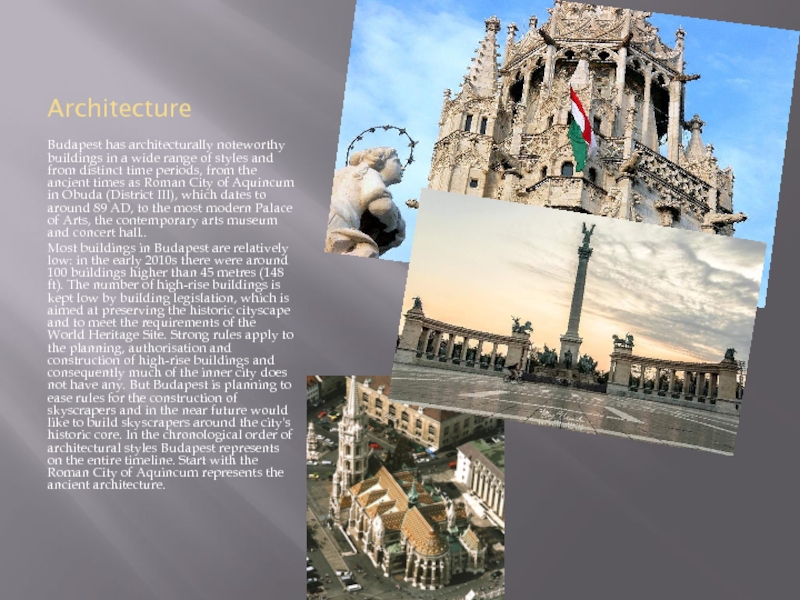- Главная
- Разное
- Дизайн
- Бизнес и предпринимательство
- Аналитика
- Образование
- Развлечения
- Красота и здоровье
- Финансы
- Государство
- Путешествия
- Спорт
- Недвижимость
- Армия
- Графика
- Культурология
- Еда и кулинария
- Лингвистика
- Английский язык
- Астрономия
- Алгебра
- Биология
- География
- Детские презентации
- Информатика
- История
- Литература
- Маркетинг
- Математика
- Медицина
- Менеджмент
- Музыка
- МХК
- Немецкий язык
- ОБЖ
- Обществознание
- Окружающий мир
- Педагогика
- Русский язык
- Технология
- Физика
- Философия
- Химия
- Шаблоны, картинки для презентаций
- Экология
- Экономика
- Юриспруденция
My vision of Budapest презентация
Содержание
- 1. My vision of Budapest
- 3. Capital City of Hungary. The history of
- 4. Most of the inner parts of present-day
- 5. Architecture Budapest has architecturally noteworthy buildings in
- 6. Districts Most of today's Budapest is the
- 7. Budapest bridges One of the most awe
- 8. Margaret Bridge Margaret Bridge is the second
- 9. Budapest is that you can be going
- 10. Budapest is arguably one of the prettiest
- 11. User Lost my heart in Budapest THANKS FOR ATTENTION
Слайд 3Capital City of Hungary. The history of Budapest began with Aquincum.
Слайд 4Most of the inner parts of present-day Budapest were built in
Слайд 5Architecture
Budapest has architecturally noteworthy buildings in a wide range of styles
Most buildings in Budapest are relatively low: in the early 2010s there were around 100 buildings higher than 45 metres (148 ft). The number of high-rise buildings is kept low by building legislation, which is aimed at preserving the historic cityscape and to meet the requirements of the World Heritage Site. Strong rules apply to the planning, authorisation and construction of high-rise buildings and consequently much of the inner city does not have any. But Budapest is planning to ease rules for the construction of skyscrapers and in the near future would like to build skyscrapers around the city's historic core. In the chronological order of architectural styles Budapest represents on the entire timeline. Start with the Roman City of Aquincum represents the ancient architecture.
Слайд 6Districts
Most of today's Budapest is the result of a late-nineteenth-century renovation,
Слайд 7Budapest bridges
One of the most awe inspiring experiences in Budapest is
The Hungarian Parliament building, the buildings along both banks of the Danube and of course Buda Castle. It’s no surprise this whole area is UNESCO World Heritage Listed.
For those busy with work or study. tramming across the river on Petofi Bridge or Margaret bridge can be the perfect reminder of the beauty of the city. That continues even if you haven’t had a chance to enjoy it in a while.
Слайд 8Margaret Bridge
Margaret Bridge is the second permanent bridge of Budapest, a
At the moment, Margaret Bridge is the worst worn bridge in Budapest. It is in urgent need of total overhaul, but the Budapest traffic would be seriously affected by the elimination of this important road. It could not be shut down until a new Northern bridge, the Megyeri Bridge was completed at the end of September 2008. According to current plans, reconstruction will be started in the first half of the year 2009. One of the most important aspects of the renovation will be the protection of the historical features of Margaret Bridge, among others the reinstallation of the sculptures that once decorated it.
















